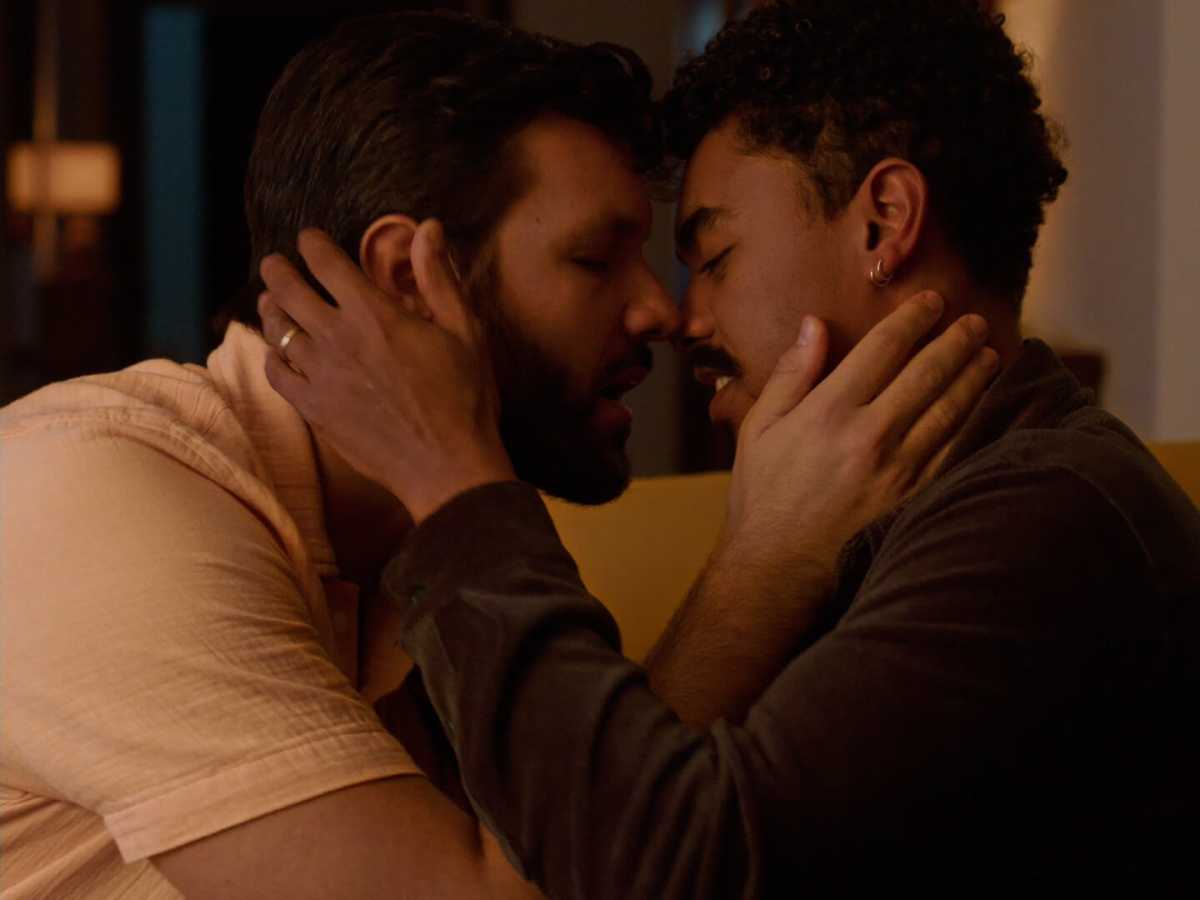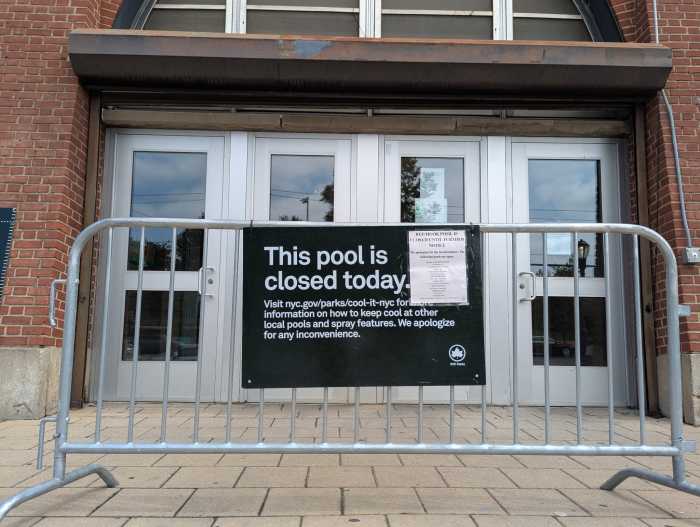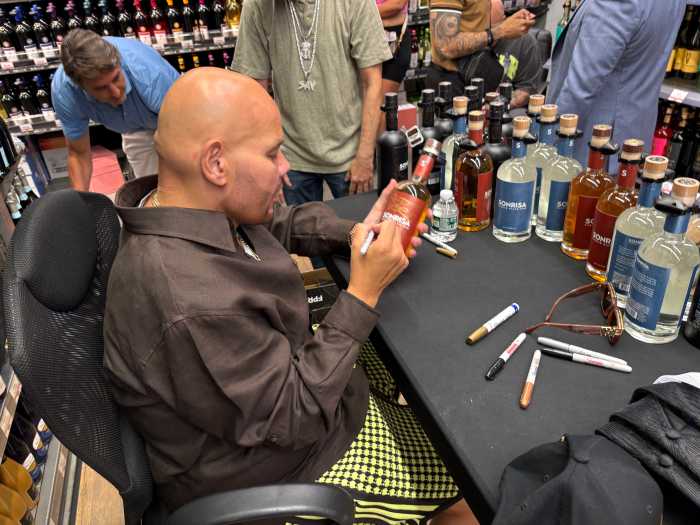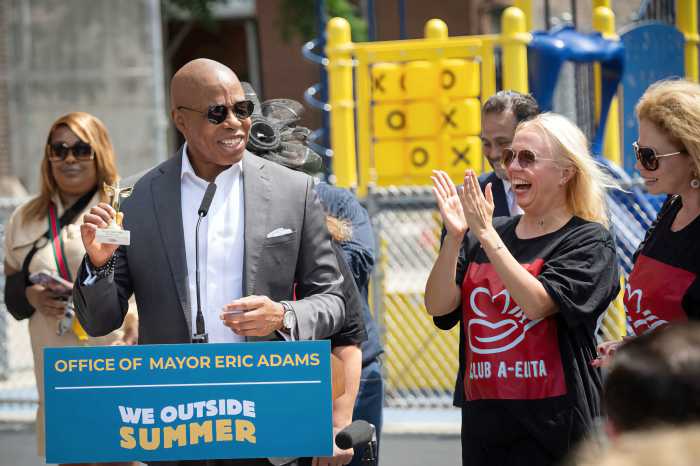This month there are a half dozen international features, documentaries, and series to stream that focus on queer sexuality. Here is a rundown of what to watch.
“What We Know” (now available on VOD)
All the major characters in the Spanish import “What We Know” want to get in bed with the handsome Victor (Javier Amann), and much of writer/director Jordi Núñez’s hangout film depicts folks trying. Carla (Nakarey, Amann’s real-life wife), a waitress with a dying mother, may have the best chance, but Martí (Mauro Cervera), the gay member of the group, is determined to at least kiss the heartthrob. And then there is Matilde (Marga Castells) who is Victor’s friend with benefits. The characters mess around with gender roles and enjoy a sexuality that is as fluid as the plot. It is all very pretty, but it never quite comes to a point.
“Threesome” (now available on Viaplay)
Likewise, the series “Threesome” has the young Swedish couple Siri (Matilda Källström) and David (Simon Lööf) hook up with Camille (Alma Jodorowsky) at a party. The experience splinters the couple, who have been together for seven years; Siri feel jealousy seeing David’s arms wrapped around Camille the next morning. This is the show’s entire point. Rather than explore her same-sex desires, Siri wishes the threesome never happened. And rather than discuss her feelings with David, she overcompensates in the opposite direction, initiating a secret affair with John (Lucien Laviscount), a handsome dancer. And no, Siri doesn’t have a threesome with John and David; David’s character is mostly relegated to fighting with and moping about Siri. The focus here is mainly on Siri’s conflicted emotions, which Källström expresses well. But even when things promise to get complicated after she runs into Camille who wants to see her and David again, the disappointing “Threesome” avoids any opportunity to address bisexuality, and instead emphasizes Siri’s relationships with men.
“The Confessions of Frannie Langton” (March 8, BritBox)
“The Confessions of Frannie Langton” is a handsomely mounted, four-part series that opens with Frances Langton (Karla-Simone Spence) accused of double murder — a hanging offense in 1862 England. Frannie is found in bed lying with her dead, blood-covered mistress, Marguerite Benham (Sophie Cookson). Marguerite’s husband, George (Stephen Campbell Moore) has also been killed. Flashbacks reveal how Frannie came from Jamaica, with John Langton (Steven Mackintosh), to relutctantly work for the Benhams. She quickly bonded with Marguerite over books—Frannie is educated—and dancing. When Frannie is asked to be Marguerite’s Lady’s Maid, Marguerite flirts with Frannie, and stirs up feelings in her. Soon they are kissing and sharing a bed. But the women’s happiness and intimacy do not last. Hep Elliot (Jodhi May) discovers the lovers and sets about a plan to uncouple them. “The Confessions of Frannie Langton” explores the limitations of race, class, and sexuality in England at the time as Frannie tries to learn how the woman she loved was murdered; the trial in the last episode reveals what happened, with several dramatic turns. The plotting may be soapy, but this glossy costume-cum-courtroom drama is well acted by the entire ensemble cast, and compelling throughout.
“Punch” (March 10, on Demand and Digital)
“Punch” is out gay New Zealand writer/director Welby Ings’ ambitious feature film debut, about Jim (Jordan Oosterhof), a teenager training for his first boxing match. He befriends Whetu (out gay Conan Hayes), a gay Māori teen, but Jim’s silence when Whetu is bullied, causes a temporary rift in their bromance. After a homophobic attack where Whetu is beaten, raped, and left unconscious, Jim redoubles his efforts to care for this friend. The teens eventually enter into a sexual relationship. Ings addresses queer expression and identity, toxic masculinity, and small-town homophobia with a heavy hand here, larding his film with subplots involving Jim’s alcoholic father (Tim Roth, wasted literally and figuratively), as well as a revenge plan, but the handsome leads are appealing even if the film they are in is disappointing.
“A Dice with Five Sides” (March 21, VOD)
In “A Dice with Five Sides,” Marcello (Alexander Ananasso) and Herman (Jake Garvey) meet for a sex date and end up playing a game with a magic die to let fate dictate their actions—e.g., if a one is rolled, an uncomfortable truth must be spoken, and if a six is played, that means sex. The game allows the two strangers to get to know each other better, and writer/director Riccardo Tamburini’s film is best when the guys are alone together. Episodes involving the shrill Maria (Eleonora Cucciarelli) and the overly sexual Max (Christian Cánovas) disrupt the flow of the charming central romance. In contrast, when Steve (David Paryla) shows up, there is a nice vibe. The film is about intimacy and finding a connection, and “A Dice with Five Sides” conveys this in a very interesting nude dance sequence late in the film. By that point, viewers come to care about the main characters as life delivers them each some fateful surprises. Tamburini’s modest (read: amateur) film drags a bit in places, but the actors are appealing and agreeable for viewers who become invested in their playful relationship.
“Eye on the Guy” (March 21, OVID)
“Eye on the Guy” is an affectionate 2006 documentary celebrating the life and work of Alan B. Stone, a gay Canadian photographer who published underground physique magazines. He developed his passion for photography as a youth at scout camp and sought out handsome male models and bodybuilders to pose for him. Stone created a lucrative mail-order business selling these male Beefcake images, and the publications circulated at a time — the 1950s and 1960s — when homosexuality was still illegal in Canada. (Stone did encounter some legal trouble.) As his health declined, he hired drivers and took road trips to shoot men in picturesque locations. The images are terrific, and the young men are quite handsome; several of the decades-older models are interviewed for the documentary and photographed in their old poses. “Eye on the Guy” is a quaint film that places Stone’s work in context with the development of gay subculture and the onset of social change.


































